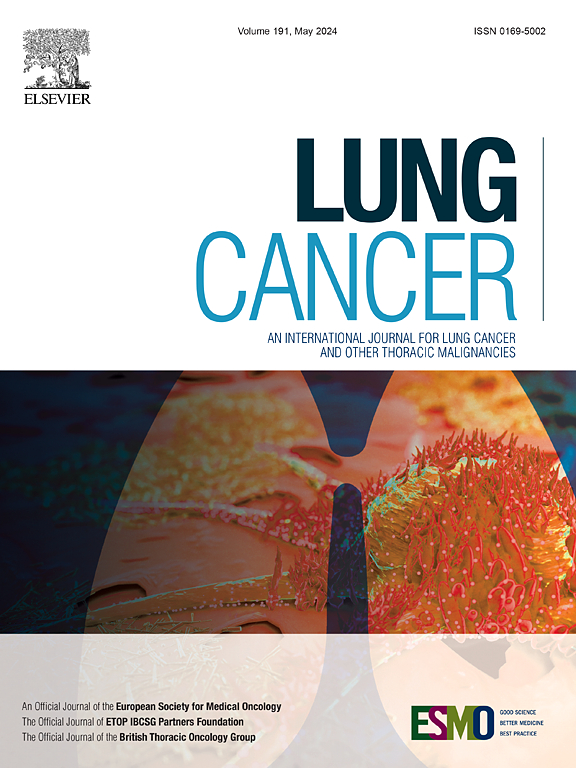Comprehensive molecular profiling of squamous non-small cell lung cancer reveals high incidence of actionable genomic alterations among patients with no history of smoking
IF 4.5
2区 医学
Q1 ONCOLOGY
引用次数: 0
Abstract
Background
Next-generation sequencing (NGS) to detect actionable genomic driver alterations (AGAs) is critical to appropriate management of non-small cell lung cancer (NSCLC), but is inconsistently performed for squamous NSCLC (sqNSCLC). Molecular characterization of sqNSCLC by smoking status has not been well-reported. We analyzed a large cohort of sqNSCLC utilizing NGS to elucidate molecular differences in sqNSCLC by smoking status.
Methods
sqNSCLC was profiled by NGS using a 592 gene panel. Smoking status was obtained from medical records. Genomic alterations, mutation burden, PD-L1 immunohistochemistry, gene set enrichment analyses (GSEA), immune-cell infiltration, and clinical outcomes were compared between never- and ever-smokers. Fisher’s exact, Mann-Whitney U or t-tests were used, where appropriate. Statistical significance was defined as p < 0.05 with q < 0.05 or FDR < 0.25, where appropriate.
Results
2,891 patients with sqNSCLC were included, of which 2862 (98%) were ever-smokers and 63 (2%) were never-smokers. AGAs were detected in 22.2% (14/63) of never-smokers and 2.4% (69/2828) of ever-smokers. Never-smokers had a significantly higher prevalence of actionable MET and EGFR mutations compared to ever-smokers (9.5% vs 0.4% and 7.9% vs 0.4%, respectively), though actionable alterations were detected in both cohorts. GSEA revealed significantly enriched expression of interferon-α, interferon-γ and IL-6/JAK/STAT pathways in never-smokers.
Conclusion
A high frequency of AGAs were detected in never-smokers with sqNSCLC, with significantly increased prevalence of actionable EGFR and MET alterations compared to ever-smokers. Our findings indicate that, analogous to the diagnostic algorithm for non-squamous NSCLC, NGS testing to inform frontline treatment decision-making is critical for never-smokers with sqNSCLC.
求助全文
约1分钟内获得全文
求助全文
来源期刊

Lung Cancer
医学-呼吸系统
CiteScore
9.40
自引率
3.80%
发文量
407
审稿时长
25 days
期刊介绍:
Lung Cancer is an international publication covering the clinical, translational and basic science of malignancies of the lung and chest region.Original research articles, early reports, review articles, editorials and correspondence covering the prevention, epidemiology and etiology, basic biology, pathology, clinical assessment, surgery, chemotherapy, radiotherapy, combined treatment modalities, other treatment modalities and outcomes of lung cancer are welcome.
 求助内容:
求助内容: 应助结果提醒方式:
应助结果提醒方式:


